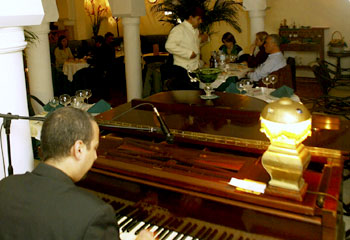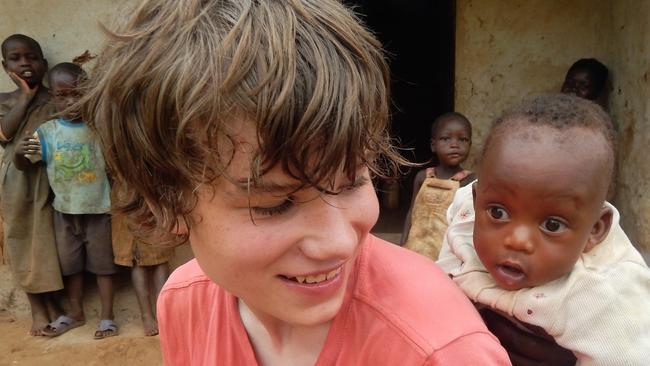More to Bogart's joint
FILM noir romance is only one story from the ancient nation at the top of Africa, says Mike Osborne

HUMPHREY Bogart's oft-misquoted words from 1942 film noir classic Casablanca were the inspiration for a romance-filled trip to Morocco.
Looking at a map, romance and mystery seep out of names such as Marrakesh, Tangier, Fes and Rabat.
Modern Morocco blends mystery, romance, poverty, sleaze and hustle in about equal parts.
The setting for Bogart and Ingrid Bergman's doomed romance is now the country's economic engine with a population of five million.
There is a gin-joint called Rick's Cafe, modelled on Rick's Cafe Americain in the movie, but it is one of very few ritzy places.
You need to dress up and it'll cost you more than $5 for a beer.
"Casa", as the locals call it, has a walled medieval town or medina where you can buy everything from aromatic spices, colourful carpets and amazing silks to dodgy antiques and adidas and Nike copies.
Casa is home to the largest mosque in Africa – the third largest in the world – built in memory of current King Mohammad VI's father, Hassan II.
The monolith of concrete, marble and green tiles can be seen from almost every part of the city and is one of the few religious centres in the country open to non-Muslims, provided you pay and turn up on time.
So set aside the romantic notions of Casablanca. Unless you have time to spare, you'd be best to leave it to the memories of Bogart and Bergman.
Casa's beaches pale in comparison with those found further south at Essaouira and Agadir.
Agadir is a popular holiday destination for Europeans while Essaouira, once a hippie hangout, is a chic beach centre that caters to the movie-star set when they are taking a break from the Atlas Studios based inland at Ouarzazate, where films such as Alexander and The Last Temptation of Christ were shot.
North of Casa are the port towns of Tangier and Rabat, the capital.
Tangier has developed a sleazy reputation as a sex, drugs and rock-and-roll haven for artists and musicians because of its proximity to Spain and southern Europe.
In contrast, Rabat is clean, bright and modern and feels like a French town, except the many cafes and bars don't serve alcohol.
Rabat's medina is probably the safest and cheapest in the country and there is far less hassle as you shop.
The city also boasts an 850-year-old fortress, the Kasbah des Oudaias, which overlooks the local river and the quiet neighbouring town of Sale.
From the Kasbah you can see Rabat's most famous landmark, the Hassan tower, which was started in the 12th century.
It was planned to be the biggest minaret in the world at 60m high but was abandoned after reaching 44m. It gets very hot here, after all.
While beaches and ports are tourist magnets, it is Fes and Marrakesh inland that really define Morocco.
The imperial city of Fes has three parts, new and old towns separated by an old Jewish quarter.
While the new town is like a southern French city, with wide cafe-lined boulevards, Old Fes, or Fes-el-Bali, is a world unto itself.
Walk through the famous Bab Bou Jeloud, or green gate, and you enter a huge living, breathing medieval city with streets so narrow only humans and donkeys can carry goods in and out.
An ancient capital, it is now home to artisans, craft workers, museums and Islamic theological colleges.
A one-hour drive from Fes, through olive groves and grape vines, is one of the great hidden treasures of Morocco: the ancient Roman ruins of Volubilis.
You can wander all over the 40 hectares of amazing ruins that clearly show the forum, basilica, fountains, baths and viaducts that brought water into the town.
Fes has been described as the symbolic heart of Morocco, but Marrakesh is the country's soul.
The city's main square is the famous Djemaa el-Fna, where snake charmers with deadly cobras, storytellers reciting ancient tales from memory, acrobats and jugglers mix with food stalls, cafes and restaurants that spill into the array of shops that fill the lanes or souqs that make up the medina.
Marrakesh is increasingly popular with expats who are establishing luxurious riads, guesthouses based on traditional Moroccan houses set around garden courtyards.
The elegant cuisine – couscous, tangines, pastilla and sweets – is best tasted in the gracious setting of a riad, rather than on the street.
Modern Morocco is a relatively safe, moderate Islamic country where some notion of Arabian Nights romance lives on.
Sunday Mail (SA)



